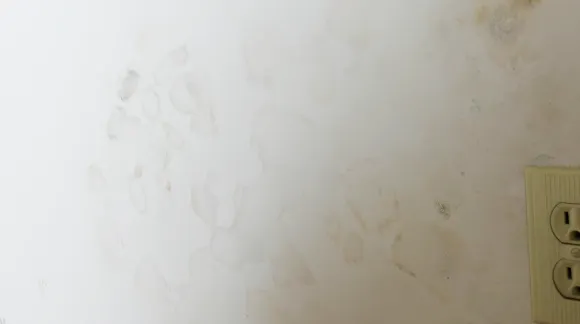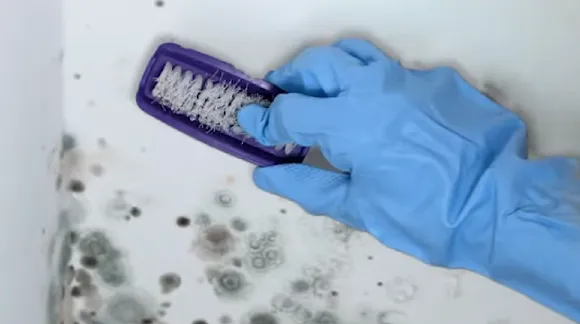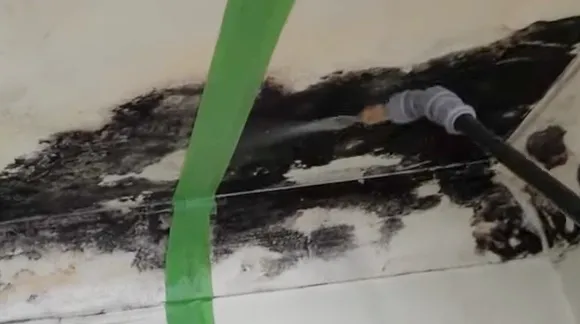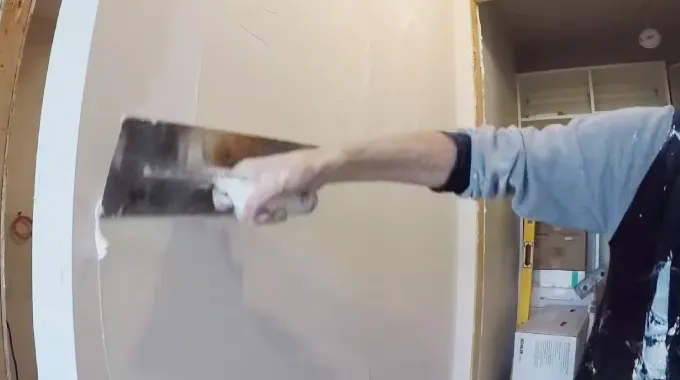Last Updated on January 31, 2023
Drywall can be susceptible to mold growth if it becomes wet or damp. There are a few simple steps that you can take to prevent mold from growing in your drywall compound.
Mold thrives in damp, dark environments. To prevent mold growth, make sure to keep your drywall compound clean and free of dust particles. Inspect the area regularly for any signs of moisture or leaks. If you notice any wet spots, immediately address the issue to prevent the area from becoming moldy.
Keep the area well ventilated to allow air to circulate and discourage mold growth. If you follow these simple tips, you can help keep mold from growing on your drywall.
How to Prevent Mold Growth In Drywall Compound: Process

- Inspect the drywall for any visible signs of mold growth.
- If you see any mold growth, use a stiff brush to scrub the affected area and remove as much of the mold as possible.
- Once you have removed the visible mold, soak a clean cloth in a solution of just one part bleach and three parts water.
- Use the cloth to wipe down the affected area and kill any remaining mold spores.
- Allow the area to air dry completely.
- Once the area is dry, apply a mold prevention primer to the affected area.
- Allow the primer to dry completely, then apply mold prevention paint to the area.
- Keep the area adequately ventilated to prevent future mold growth.
- Monitor the area for any signs of mold growth and repeat steps 2 to 8 as necessary.
- Keep the humidity in your home at a level below 60%.
- Use an air conditioner or dehumidifier to remove excess moisture from the air.
- Repair any leaks in your home promptly.
- Ventilate areas of your home that tend to be moist, such as the kitchen and bathroom.
- Regularly clean areas of your home that are susceptible to mold growth, such as the refrigerator and shower.
If you are unable to remove the mold yourself, call a professional for assistance
Why is Drywall Mold a Problem in Homes?
A mold is a form of fungi that can be grown both indoors and outdoors. Mold thrives in damp, humid surroundings and can disperse spores into the air. These spores can cause respiratory problems, such as coughing and sneezing, as well as headaches and dizziness.
Mold has been linked to a number of serious health conditions, including asthma, bronchitis, and immune system disorders. If you suspect that you have mold on your property, it is crucial to have it removed by a professional as soon as possible. Not only will this help to improve your indoor air quality, but it will also help to protect your family’s health.
Why Should You Prevent Mold Growth on Drywall?

Mold is a type of fungus that grows on a variety of surfaces, including drywall. Here are some reasons for prevention with details.
Mold growth is often the result of high humidity or water damage
Mold is a type of fungus that consists of small cells that reproduce by releasing spores. These spores are invisible to the naked eye and can be found in the air, on surfaces, or in water. When the conditions are right for mold growth, the spores will germinate and begin to grow.
Mold typically thrives in environments that are warm, moist, and dark. High humidity levels or areas of water damage are often ideal for mold growth. Once mold begins to grow, it can spread quickly through the production of more spores.
Mold can cause structural damage to buildings and may also pose a health risk to humans. Those with allergies or asthma may be particularly susceptible to the effects of mold exposure. For these reasons, it is important to take steps to prevent mold growth in your home or business.
Drywall mold can also damage your property, leading to expensive repairs
When most people think of mold, they envision the greenish-black substance that can form on damp surfaces like shower stalls and windowsills. However, mold comes in many different colors, including white. While drywall mold may not be as noticeable as other types of mold, it can cause just as much damage to your property.
Drywall mold is especially problematic because it thrives in warm, humid environments exactly, the kind of environment that is common in many homes and businesses. The good news is that drywall mold is relatively easy to prevent. Simply keep your property clean and dry, and monitor for any signs of water damage.
If you do find mold, act quickly to clean it up and repair any water damage. Simply by following these steps, you can protect your property from the costly effects of drywall mold.
You Might be Interested: How do you get black mold out of drywall?
Mold can cause a number of health problems

Anyone who has ever dealt with mold knows that it is not only unsightly, but it can also cause a range of health problems. Mold is a type of fungal organism that thrives in damp, dark environments and can release spores into the air.
These spores can cause respiratory issues, skin irritation, and allergies in people who are exposed to them. Mold exposure can sometimes even lead to serious illnesses such as lung infection and cancer. The best way to avoid mold related health problems is to prevent mold growth in the first place.
This can be done by ensuring that your home is well ventilated and free of moisture. If you do find mold growing in your home, it is important to remove it immediately.
There are a number of products on the market that can effectively kill mold and prevent it from coming back. By taking these simple steps, you can defend yourself and your family from the potentially harmful effects of mold.
How to Identify the Signs of a Drywall Mold Problem?
Early detection is key when it comes to mold growth in your home. Mold can spread quickly, and before you know it, you may have a full-blown infestation on your hands. Fortunately, there are some telltale signs that can help you identify a potential mold problem before it gets out of control.
- One of the most common signs of mold is musty odors. If you notice a persistent musty smell in your home, there is a good chance that mold is present.
- Another common sign is visible mold growth. Mold typically thrives in the dark, moist areas, so check under sinks, in closets, and in other darkened areas for any indications of mold growth.
- You should also be on the lookout for Water Stains or Discoloration, as these can indicate leaks or other water problems that could lead to mold growth. If you suspect that you may have a mold problem, it is important to take action immediately.
Contact a professional mold remediation company to assess the situation and determine the best course of treatment. Taking swift action can help to prevent the problem from getting worse and potentially causing health issues for you and your family.
Tips for Cleaning Up Formed Mold

If you find mold in your home, it’s important to clean it up as soon as possible. Mold can cause health problems, and it can also damage your home. Here are some tips for cleaning up mold:
- Start by finding the source of the moisture. Mold needs moisture to grow, so if you can eliminate the source of moisture, you’ll stop the mold from growing.
- Next, clean all surfaces that have mold on them. Use a detergent or bleach solution to kill the mold.
- If the mold is on porous surfaces like drywall or carpet, you may need to replace those materials.
- Finally, make sure to keep the area where the mold was growing clean and dry to prevent it from coming back.
You Can Also Read:



